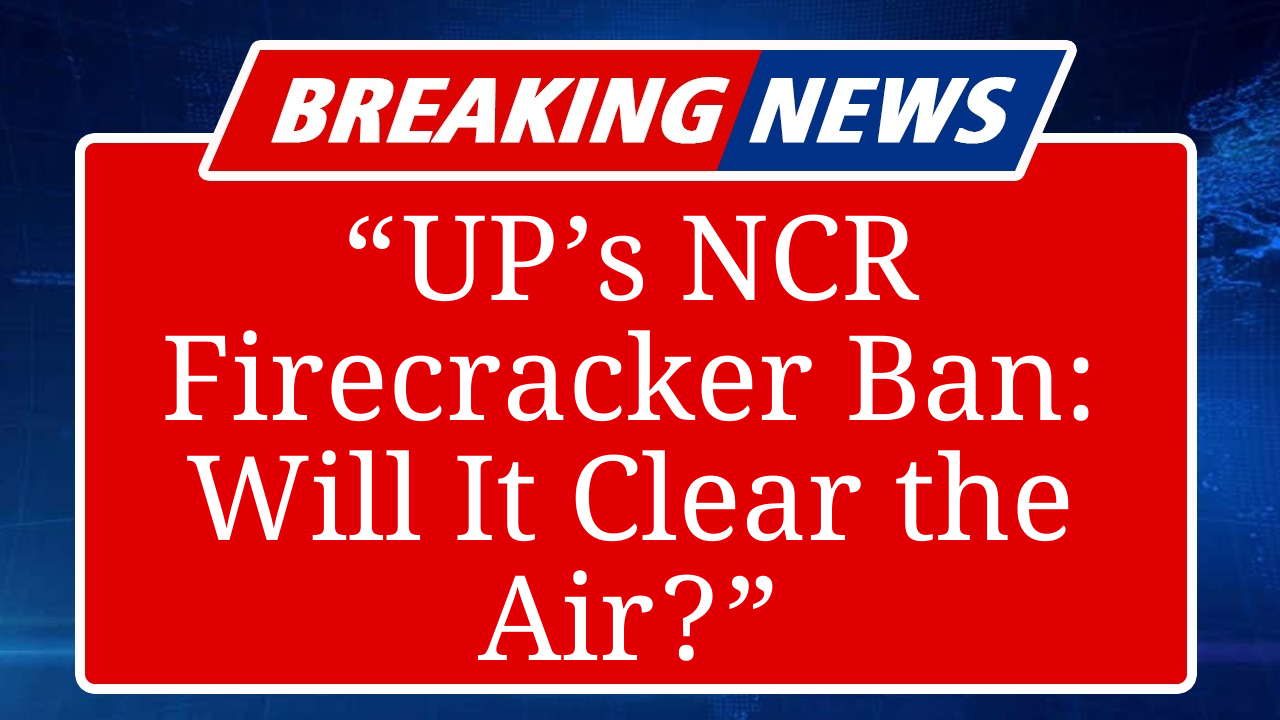“The Supreme Court has extended a complete firecracker ban in Uttar Pradesh’s NCR districts until further notice, aiming to combat severe air pollution. Initially set to expire, the ban, enforced since 2017, addresses hazardous air quality during winter, particularly post-Diwali. Authorities are tasked with strict enforcement, while traders argue for relaxed restrictions, citing economic impacts.”
Uttar Pradesh Strengthens Firecracker Ban in NCR to Tackle Air Pollution
The Supreme Court, on January 17, 2025, extended the complete ban on the manufacture, storage, sale, distribution, and use of firecrackers in the National Capital Region (NCR) districts of Uttar Pradesh, including Ghaziabad, Noida, and Greater Noida, until further orders. This decision, part of the ongoing MC Mehta case addressing Delhi-NCR air pollution, reinforces measures to mitigate the region’s persistent air quality crisis, particularly during the winter months when pollution peaks due to factors like stubble burning, vehicular emissions, and firecracker use during festivals like Diwali.
The court’s ruling aligns with its November 11, 2024, observation that no religion endorses polluting activities and that the right to a clean environment is enshrined under Article 21 of the Constitution. Justices Abhay S. Oka and Ujjal Bhuyan emphasized the need for stringent enforcement, expressing dissatisfaction with previous lapses in compliance. The bench directed NCR states, including Uttar Pradesh, to establish effective mechanisms for implementing the ban, with compliance reports due by March 24, 2025.
Uttar Pradesh’s NCR districts have been under a firecracker ban since 2017, following a Supreme Court inquiry into the impact of fireworks on air quality. Initially, the court permitted “green crackers” in 2018, which exclude harmful barium salts, but difficulties in distinguishing them from conventional firecrackers led to a blanket ban on all fireworks since 2020. The air quality in NCR districts often deteriorates to “severe” or “hazardous” levels (AQI above 400) post-Diwali, exacerbating respiratory issues among residents, particularly children and the elderly.
The Federation of Fireworks Traders, intervening in the case, argued that firecrackers contribute minimally to pollution in certain areas and that the ban affects livelihoods. Justice Oka dismissed these claims, stating that traders could operate outside NCR regions and that public health supersedes commercial interests. The court also rejected pleas to limit the ban to a few months, noting that stockpiling could undermine seasonal restrictions.
In Uttar Pradesh, enforcement remains a challenge. Despite the ban, illegal firecracker sales and use have been reported, with Delhi Police seizing over 1,300 kg of banned fireworks in October 2024, some sourced from NCR districts. The state government has been urged to strengthen monitoring, with the Supreme Court directing Chief Secretaries to form committees to oversee compliance and address other pollution sources like stubble burning.
The Delhi Pollution Control Committee’s (DPCC) parallel ban, effective until January 1, 2025, in the National Capital Territory, has set a precedent for NCR states. Uttar Pradesh and Rajasthan have been asked to emulate Haryana and Delhi in curbing online firecracker sales. Environment Minister Gopal Rai has advocated for a region-wide approach, noting that 69% of Delhi’s pollution originates from NCR states, including Uttar Pradesh, according to a Centre for Science and Environment report.
Public health concerns are at the forefront of the ban. Hospitals in NCR districts have reported a surge in respiratory cases during winter, with AQI levels in areas like Anand Vihar reaching 385 in recent weeks. The Supreme Court highlighted that vulnerable populations, such as street vendors and slum residents, suffer disproportionately, lacking access to air purifiers. The court’s April 4, 2025, ruling underscored clean air as a constitutional right, dismissing claims that green crackers are pollution-free.
Opposition voices, including the Delhi BJP, have criticized the ban’s focus, arguing that stubble burning and dust pollution are larger contributors. However, the court has maintained that firecrackers, even if a smaller factor, significantly worsen air quality during festive periods. Uttar Pradesh authorities are now tasked with balancing enforcement with public awareness campaigns to ensure compliance.
Disclaimer: This article is based on recent news reports, court rulings, and official statements from sources like The Economic Times, The Hindu, Times of India, and LiveLaw. Data on air quality and enforcement actions is sourced from the Central Pollution Control Board and Delhi Pollution Control Committee. The information reflects the latest developments as of September 2, 2025, and is subject to change with new court orders or state actions.

